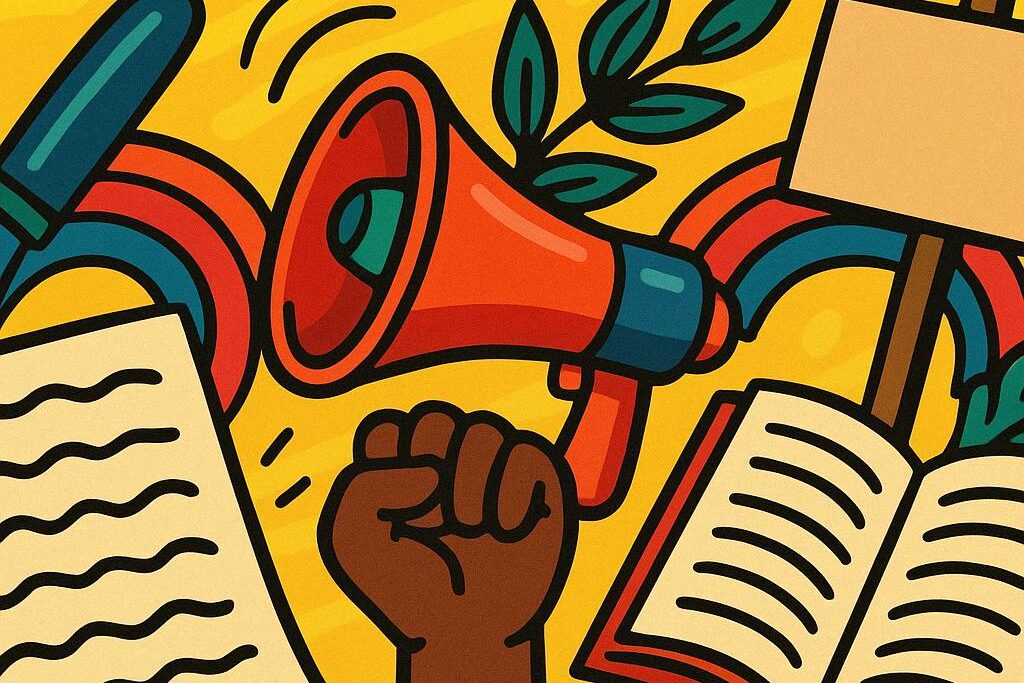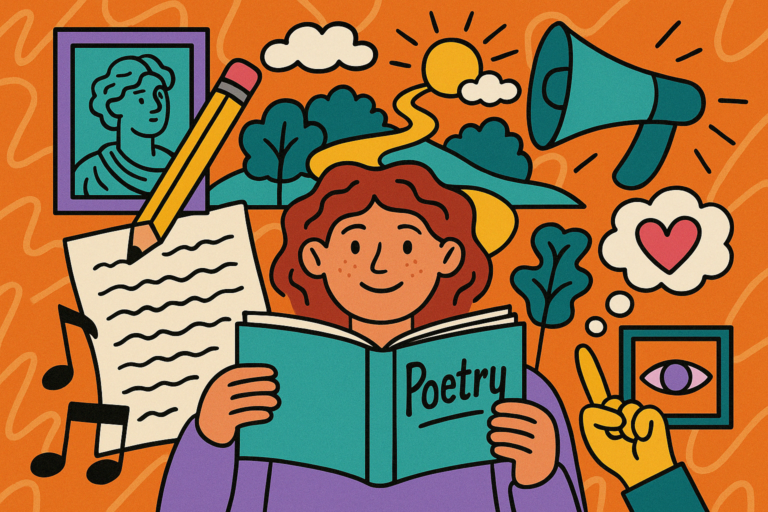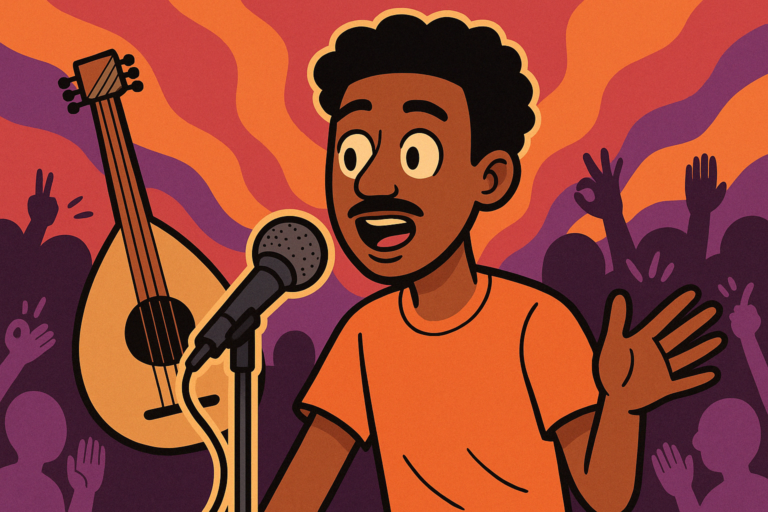What Kind of Poetry Fueled Social and Political Movements

When we talk about political movements, we don’t always give poetry its due. But dig a little, and it’s everywhere. In chants, in manifestos, on protest signs, and sometimes, in the cracks of history where no one else was listening. Poetry’s portability—its ability to spread through whispers, pamphlets, performances—has made it a powerful political tool. And not just recently. We’re talking across empires, revolutions, occupations, and civil rights uprisings.
What surprised me most while researching this was just how many movements relied on poetry not just as expression, but as strategy. It wasn’t just background noise—it shaped the emotional and intellectual terrain of the fight.
This post explores the types of poetry that have done that work—what they look like, how they sound, and why they’ve mattered more than we often realize. If you already know the impact, my hope is you’ll see the mechanics of it in a new light.
Historical Lineage of Politically Charged Poetry
To really understand how poetry fuels movements, we’ve got to start way, way back—because this relationship isn’t modern. It’s baked into the form. Poetry has always had the range to be sacred, subversive, and strategic.
Take classical Greece and Rome. Poets like Horace and Juvenal mastered the art of veiled critique. Sure, they wrote odes, but also biting satire—“bread and circuses” wasn’t just a catchy line, it was political commentary.
In early Arab cultures, poetry was so central to public life that tribal poets were seen as cultural weapons—literally called “the tongue of the tribe.” Their verses could praise or humiliate, rally or dismantle, and the impact was immediate and communal.
Fast forward to Romanticism and it gets more obvious. Poets like William Blake, Percy Shelley, and Lord Byron weren’t writing in a vacuum. Shelley’s The Mask of Anarchy, written in response to the Peterloo Massacre, reads like a protest pamphlet: “Rise like Lions after slumber / In unvanquishable number.” It wasn’t published in his lifetime, but decades later, that line showed up on signs during the British labor movement. That’s legacy. That’s activation.
Then you’ve got the 20th century, where things get less metaphorical and more direct. Think about Langston Hughes and the Harlem Renaissance. His poetry was accessible, musical, and fiercely political—“Democracy will not come / Today, this year / Nor ever / Through compromise and fear.” That wasn’t meant for salons—it was for the streets, the classrooms, and the pulpit.
In colonial and post-colonial contexts, poetry became survival. Faiz Ahmed Faiz in Pakistan wrote subversive verse under military regimes. His poem “We Shall See” was banned, then resurrected by protestors decades later, becoming a rallying cry during anti-government demonstrations. Same with Aimé Césaire and Léopold Sédar Senghor—poets who used surrealist style to rewrite the story of Black identity under French colonial rule.
Their work helped form Négritude, a cultural movement that challenged racial hierarchies by reclaiming African heritage through poetry.
Even in occupied Palestine, poetry has functioned as resistance. Mahmoud Darwish, whose work I went down a serious rabbit hole for, wasn’t just a poet—he was a national voice. His poems weren’t abstract—they named the trauma of dispossession, exile, and statehood, and they became oral currency in refugee camps and among diasporas.
So what connects all this across time?
It’s not just the politics of it—it’s the form. Poetry’s compression, ambiguity, and rhythm make it uniquely suited for environments where direct speech is dangerous. It can fly under radars, cross borders, and still punch you in the gut.
Basically, poetry has always known how to work the system while subverting it. And when movements need something both beautiful and strategic, it’s often the poets who show up first.
Key Characteristics of Movement-Driven Poetry
The more I read across different political contexts—whether postcolonial, revolutionary, or abolitionist—the clearer it became that there’s a kind of code to movement poetry. It’s not about genre or aesthetic purity. It’s more about function. Movement-driven poetry tends to share certain traits—not because poets are copying each other, but because these are the tools that work. They stir people, carry messages, survive repression, and stay alive in memory.
So here’s what kept showing up across centuries and continents:
1. Accessibility of Language
This is one of the biggest tells of activist poetry: it talks like people talk. Not always, but often enough that it becomes a recognizable feature. Political poems are rarely opaque. You’ll see slang, vernacular, code-switching, even outright profanity—not for effect, but because the language is doing two jobs: expressing emotion and making sure the message lands.
Think of Langston Hughes, whose poetry blends plainspoken observation with rhythmic punch. Or June Jordan, who could pivot between academic critique and street-level urgency in the same poem. When you read activist poems aloud, they often feel like conversations, chants, or confrontations. That clarity isn’t a simplification—it’s a tactic.
2. Collective Voice
A lot of movement poetry isn’t “I”—it’s we. Or if it starts personal, it builds outwards. This shift from the individual to the collective is crucial, especially in protest movements. The poet becomes a conduit, not just a narrator.
This is true even when the poem is intimate. Audre Lorde’s “A Litany for Survival” is a deeply personal piece, but by the end, it’s a collective invocation. “We were never meant to survive.” That’s not autobiography—it’s coalition. This kind of voice encourages identification: that sounds like me, I could be part of this.
It’s why poets are often brought in to open rallies, not close them. They don’t summarize the cause—they help build the emotional and rhetorical “we.”
3. Performativity
Movement poetry is often written to be heard—not just read. It’s inherently oral, designed for rallies, radio, protests, public meetings. You hear this in the pacing, the repetition, the strategic pauses. There’s call-and-response. There’s rhythm, not just in a musical sense, but in a bodily one—like it wants to move your blood.
Spoken word traditions thrive in activist spaces because of this. Think Amiri Baraka, Suheir Hammad, or any of the poets coming out of slam scenes. They’re not just writing for the page—they’re writing for the mic. And that performance dimension allows them to reach audiences that might not engage with poetry otherwise.
4. Imagery of Resistance
You know those lines that just burn into your brain? Movement poetry is full of them. Activist poets often lean into symbolism that sticks—chains, fire, breath, land, water, blood. These aren’t just metaphors; they’re visual shorthand for freedom and oppression.
What’s fascinating is how universal some of these images are, even when the politics shift. The body under surveillance or attack. The breath taken or reclaimed. The land that belongs to someone else, or is taken from you. These metaphors are portable—they travel across time, language, and geography.
Think about how the phrase “I can’t breathe”—a tragic final utterance—became a global slogan. That’s the kind of poetic compression that fuels movements. A single line becomes a world of resistance.
5. Formal Innovation
This part really got me excited. Movement poetry often messes with the rules—because the rules themselves are part of what’s being challenged.
You’ll see unconventional line breaks, fragmented syntax, visual poetry, and hybrid forms (like mixing essay with lyric or documentary). A good example here is Claudia Rankine’s “Citizen”—a book that refuses to pick one form. Or M. NourbeSe Philip’s “Zong!”, which redacts and fractures colonial legal documents into anti-poems.
In contexts where control is linguistic—like state propaganda, religious dogma, or colonial language imposition—breaking form becomes a rebellion in itself. The poem says: “This is what freedom looks like.”
6. Intertextuality
Activist poetry often “talks back” to history. It quotes, references, reclaims. It might riff on a national anthem, quote a politician sarcastically, or draw on sacred texts in subversive ways.
This is about memory as resistance. It’s why poems like “Let America Be America Again” hit hard—not just because they speak truth, but because they hold a mirror to language that was already supposed to mean something.
Intertextuality also builds solidarity across generations. A contemporary poet might be quoting James Baldwin, referencing Nina Simone, and riffing off Paul Laurence Dunbar all in the same piece. That layered conversation creates a literary lineage of resistance.
7. Urgency and Impermanence
One last thing that really stood out: a lot of political poetry isn’t trying to be eternal. It’s trying to work right now.
That doesn’t mean it’s not artful. But it’s written for a moment, a rally, a flashpoint. It might be handed out on leaflets, or shouted from a stage, or posted online for 24 hours before being censored. Some of it survives. Some of it’s meant to be disposable—because what matters is the spark.
This is a big contrast with academic or “literary” poetry that’s obsessed with posterity. Movement poetry often says: “I don’t need to be remembered. I need to be useful.”
Put all these elements together, and you start to see a pattern—not of form, but of function. These characteristics aren’t about writing style. They’re tactical choices made by poets who know they’re writing in a context of urgency, suppression, and change.
Case Studies Of Poems That Shifted Public Consciousness
Let’s look at some concrete examples—poems that didn’t just get published, but got picked up by people and movements. Each one is different in tone and context, but all of them shaped public discourse in real, measurable ways.
“Let America Be America Again” – Langston Hughes
Written in 1935 during the Great Depression, this poem is almost surgical in how it exposes the gap between America’s promises and its realities. Hughes uses repetition and anaphora to create a rhythm that feels like both prophecy and indictment.
The opening lines seduce the reader with the idea of America as dream, only to undercut it with biting honesty:
Let America be America again.
Let it be the dream it used to be…
America never was America to me.
That final line became iconic. You’ve probably seen it quoted in activist circles, on social media, even political speeches. What makes this poem so effective is how it uses the language of patriotism to call out national hypocrisy. It doesn’t reject the dream—it says the dream was never real for Black people, immigrants, workers, or Indigenous Americans.
That rhetorical move—reclaiming the national voice—has influenced generations of poets and activists.
“Still I Rise” – Maya Angelou
At this point, “Still I Rise” is practically scripture in the Black feminist canon. But it’s not just a self-empowerment poem—it’s a defiant political performance.
The repeated line “I rise” becomes a kind of refrain, a call-and-response that grows louder and more daring as the poem builds. Angelou mixes intimate pain with collective triumph, personal history with ancestral memory:
Bringing the gifts that my ancestors gave,
I am the dream and the hope of the slave.
It’s impossible to ignore the body politics in this poem—the hips, the sass, the laughter. It’s joy as resistance. And that’s a political act.
What’s wild is how the poem has been used: at protests, graduations, funerals, campaigns. It travels. It works in every space because it reminds us that survival is not just endurance—it’s victory.
“Democracy” – Mahmoud Darwish
Darwish’s work is woven into the Palestinian national psyche, and “Democracy” is one of those poems that captures the impossible paradox of longing for freedom while stateless.
Darwish doesn’t just describe occupation—he writes against it, crafting a kind of poetic statehood. His poems are filled with borders, checkpoints, olive trees, exile. But “Democracy” questions the very premise of Western liberalism in a place where democratic ideals never applied.
He writes:
We love life if we find a way to it.
It’s hauntingly simple. The poem holds both sorrow and resistance. And for many Palestinians, Darwish isn’t just a poet—he’s a kind of unofficial diplomat, giving the world a language to understand their condition when politics fails them.
“A Litany for Survival” – Audre Lorde
If you want to see what radical vulnerability looks like as a political tool, this poem is it. Lorde was deeply invested in the idea that silence equals death, especially for Black women, queer people, and the marginalized. This poem is about what happens when we stop letting fear dictate our speech:
…and when we speak we are afraid
our words will not be heard
nor welcomed
but when we are silent
we are still afraid.
So it is better to speak.
It’s been quoted in activist workshops, health justice spaces, and queer liberation events. It’s part mantra, part map. And it directly links personal survival to political urgency. You feel it in your gut.
“Occupation” – Suheir Hammad
Hammad, a Palestinian-American poet, brings together personal identity and global conflict in a voice that’s razor-sharp and tender all at once. Her poem “Occupation” confronts not just war and violence, but also the internalization of those forces—what it means to be caught between worlds.
She writes:
I will not dance to your war drum.
I will not lend my soul nor my bones to your war drum.
What’s striking here is her refusal. The poem is not just about mourning—it’s about opting out of state violence and refusing the scripts offered to her as a woman of color in America.
This kind of refusal, especially when expressed in poetry, becomes a blueprint for resistance.
Each of these poems did more than speak truth—they helped shape it. They became usable, repeatable, quotable texts that made people feel seen and gave them language to fight back.
Why It Still Matters
If you made it this far, you probably already believe poetry has power. But what I’ve come to realize through all this research is just how deliberate that power is.
These aren’t just artists expressing themselves. They’re strategists, working with language the way organizers work with logistics. Every line is designed to move hearts, open eyes, rally crowds, or outlast censorship.
Poetry gives movements rhythm, memory, and voice. It survives in whispers and on walls. It fits in a pocket or fills a stadium. And when the speeches end, the poems keep speaking.
So the next time someone asks, “What can a poem do?”—I hope you’ll have a long, satisfying answer.
And maybe a line or two ready to quote.





